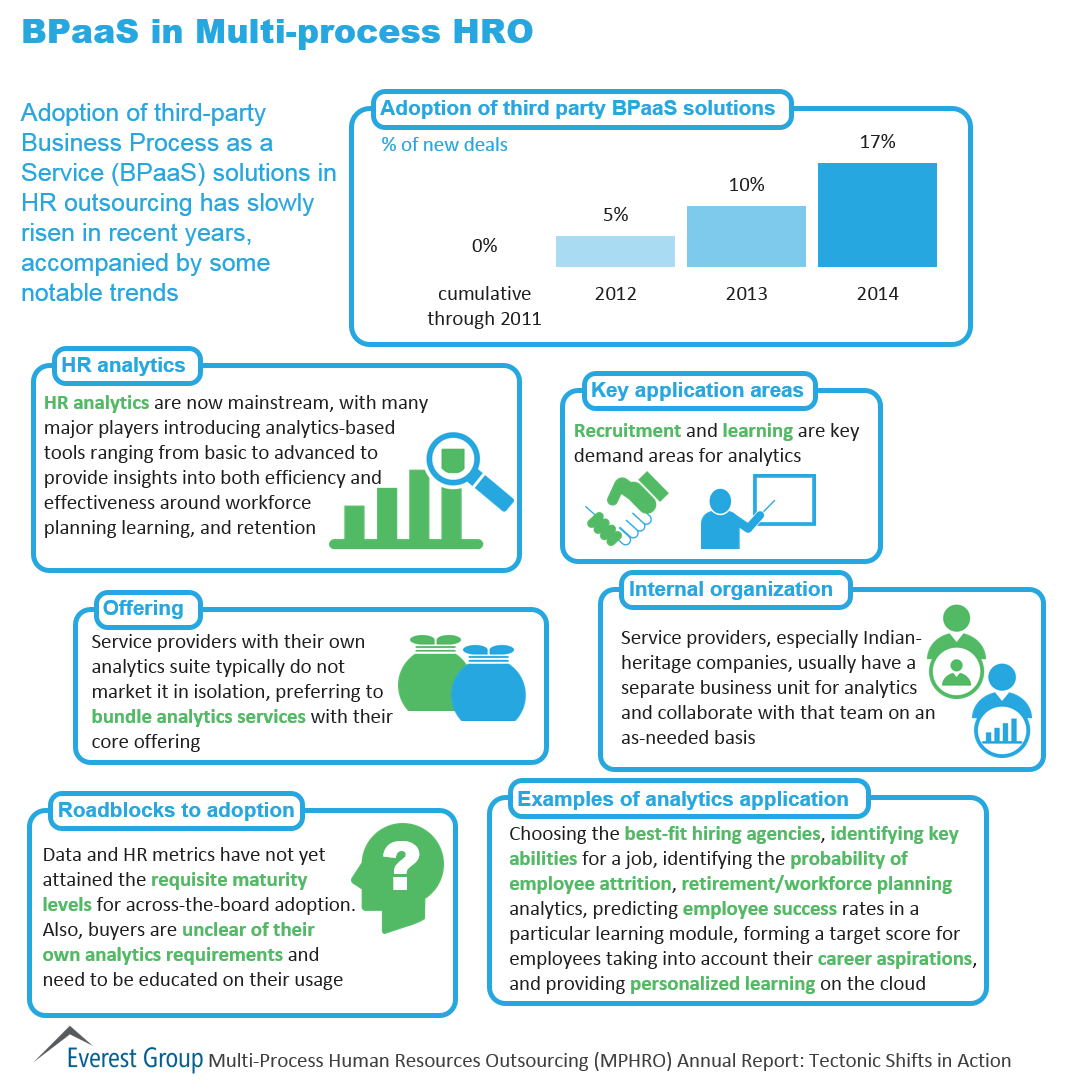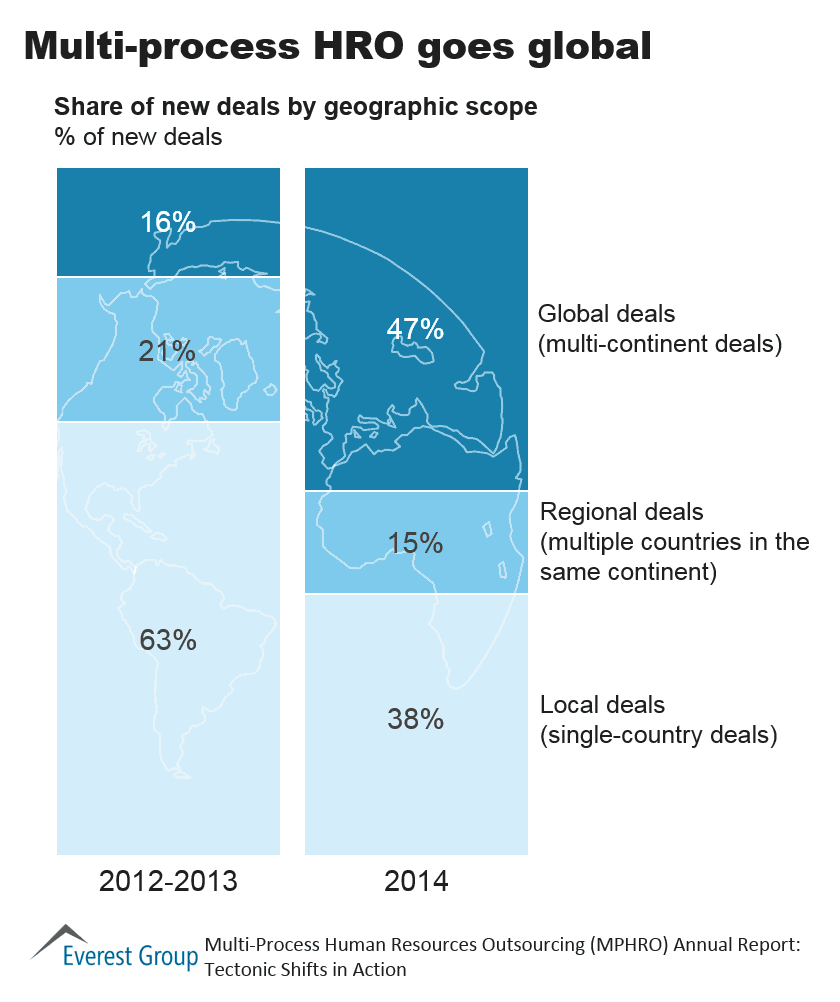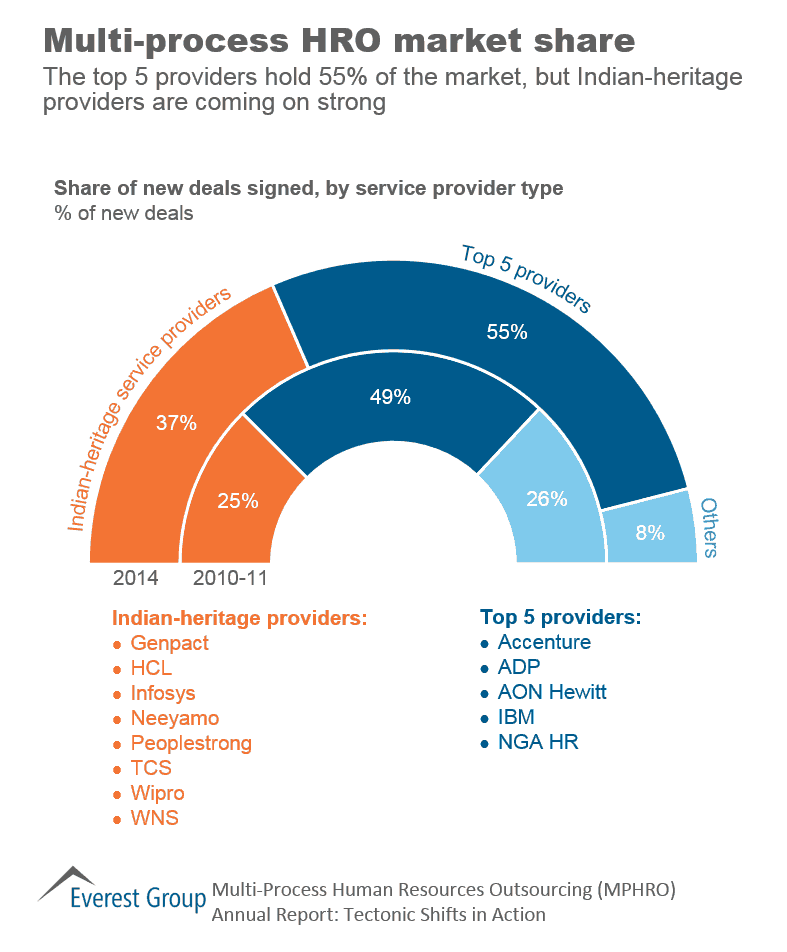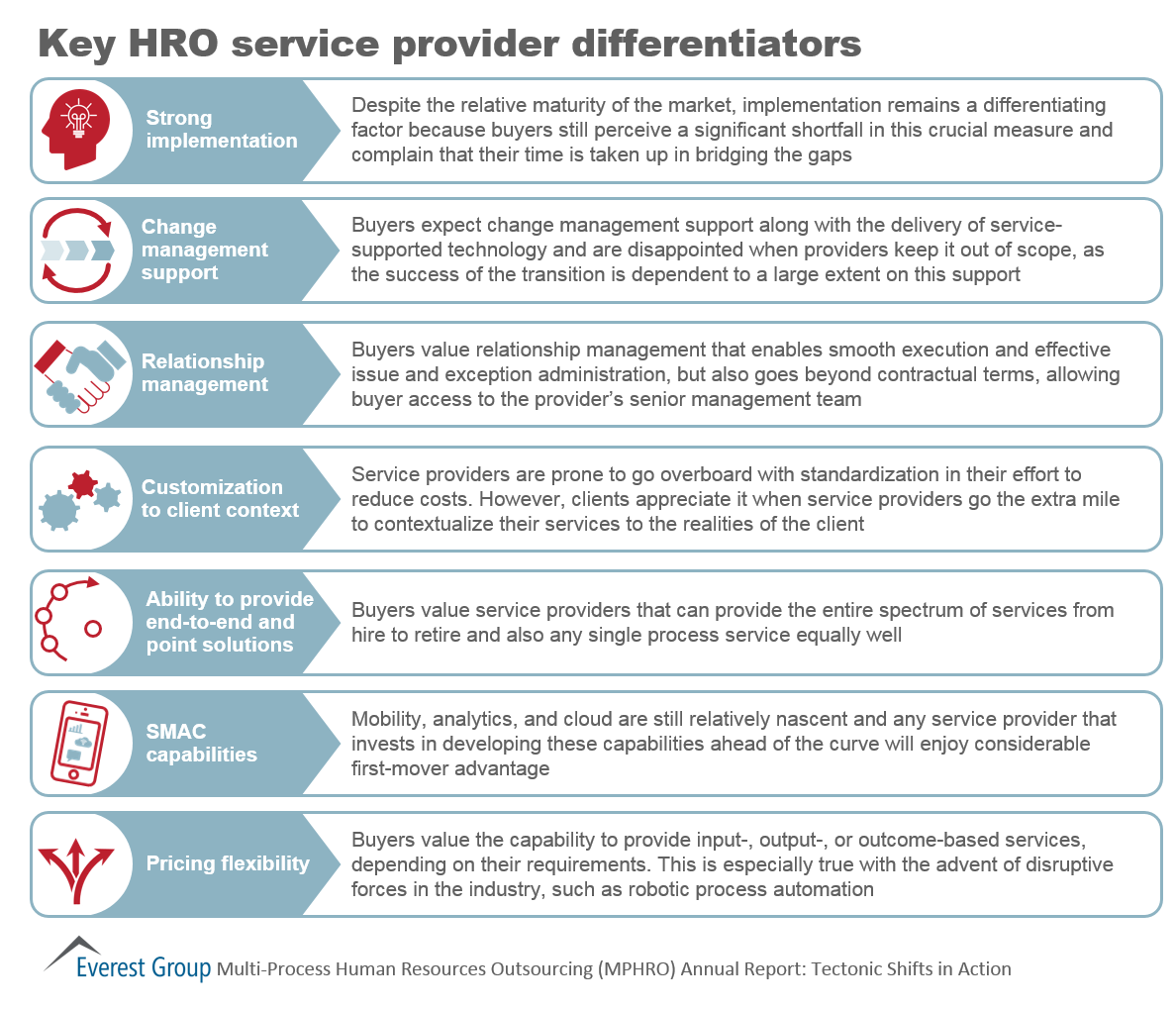September 23, 2015
Accenture, Cognizant, Deloitte and IBM identified as Leaders in the report; Analytics enablement still an aspiration for most life sciences firms
DALLAS, September 23, 2015 — Big data and analytics in life sciences is moving beyond traditional data management and reporting to insights-driven decision making with tools for predictive and prescriptive analytics—but it is a slow evolution.
One in every four life sciences IT outsourcing (ITO) transactions in 2014 had an element of big data and analytics in scope, primarily as an add-on service with traditional IT services. The scope predominantly revolved around conventional analytics services such as data warehousing and basic reporting. Only one in five life sciences ITO deals comprised advanced analytics services such as predictive analytics, reflective of the fact that true analytics enablement is still an aspiration for most life sciences firms.
“Evolving consumer engagement models and rising business complexities have led the life sciences industry to make advances in data-driven business decision making,” said Abhishek Singh, practice director at Everest Group. “However, stakeholders are still a long way from realizing the true value of data, as the focus remains largely on sales and marketing analytics. In this situation, engaging ‘non-CIO’ buying centers, such as COO, CMO, CPO and CDO, will be key for service providers to demonstrate the enterprise-wide value of big data and analytics.”
Everest Group—a consulting and research firm focused on strategic IT, business services, and sourcing—reports that pharmaceuticals firms accounted for over half of the big data and analytics transactions in 2014, with increasing traction for services around data mining, warehousing and curative reporting. Medical device and biotechnology firms are catching up with analytics adoption, primarily exploring these tools for the optimization of manufacturing and supply chain processes.
These findings and more are discussed in Everest Group’s recently released report, Life Sciences Big Data and Analytics IT Services – Service Provider Landscape with PEAK Matrix™ Assessment 2015.
***Download Complimentary 4-page Preview Here***
This inaugural report provides a comprehensive assessment of the service provider landscape for big data and analytics IT services in the life sciences industry. It maps 18 leading service providers on the Everest Group PEAK Matrix, which is a composite index of a range of distinct metrics related to a service provider’s capability and market success. The report also provides an overview of the extent of big data / analytics adoption across the life sciences value chain, drivers of adoption, deal trends, evolving definitions, and focus of investments. Moreover, based on its research findings, Everest Group includes in this report business strategy recommendations for buyers and service providers to consider.
In the market for big data and analytics IT services for life sciences, Everest Group identified four Leaders: Accenture, Cognizant, Deloitte and IBM. Leaders are at the leading edge of big data and analytics innovation. They combine consulting expertise with cutting-edge solutions to enable insights-driven decision making among life sciences stakeholders.
Major Contenders comprise Capgemini, CGI, CSC, Dell Services, HCL, HP ES, Infosys, NTT Data, TCS, Teradata and Wipro. Major Contenders have robust ongoing investments in ramping up capabilities along the life sciences value chain, with a distinct focus on “run the business.”
Aspirants include EPAM, IGATE and Tech Mahindra. Aspirants are attempting to evolve a life sciences-specific value proposition, choosing either to extend broad-based offerings or carve out a niche in particular opportunity areas.
About the PEAK Matrix™
The Everest Group PEAK Matrix is a proprietary framework for assessing the relative market success and overall capability of service providers based on Performance, Experiences, Ability and Knowledge. Each service provider is comparatively assessed on two dimensions: market success and delivery capabilities. The resulting matrix categorizes service providers as Leaders, Major Contenders, and Aspirants. Companies that demonstrate strong upward movement in successive reports are recognized as Star Performers. Everest Group recently announced a recalibrated methodology, in which innovation, intellectual property and technology take center stage.




